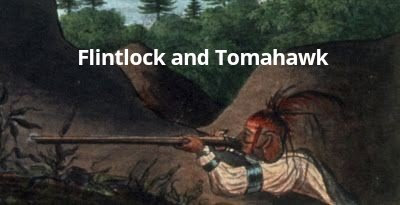July 18, 2015 – July 19, 2015
Join us July 18th and 19th, 2015 to discover how 257 years ago, the Battle of Carillon sealed the reputation of Ticonderoga for generations to come. Stand with the loyal and courageous French soldiers that defended the French lines against all odds, and meet the British and Provincial soldiers who gave their all to drive the French from the rocky peninsula and fortress of Ticonderoga.
Under the warm July sun, French soldiers gazed out from between
sandbags atop the breastwork of logs they had hastily constructed over
the past two days. Behind them stood the Marquis de Montcalm, a general
used to doing the impossible in Canada and the mountains of Italy. With
woolen vestes packed
away, wearing the white coats of France, each French soldier
double-checked his stockpile of loaded muskets and hoped for a miracle
to defend New France from a British onslaught. Sweat beading up on their
brows, they looked over tangled branches and a forest of mere stumps.
With piercing eyes they looked over the top of the stacked logs and
began to see blazing musket fire explode as the largest single day of
battle yet in the history of North America began.
Three days prior, the largest military force ever assembled in North
America embarked by bateaux down Lake George, leaving the ruins of Fort
William Henry to invade New France from the south. At Fort Carillon,
3,700 French soldiers, Canadian milice,
and native warriors stood to defend French soil in the New World.
Abercromby’s army of British and Provincial soldiers landed at the north
end of Lake George, after a long night packed into the fleet of
bateaux. Sweeping through the La Chute valley, Brigadier General Lord
Augustus Howe and the advanced guard encountered a lost patrol of French
soldiers. In the ensuing confusing battle Lord Howe was shot through
the chest, and killed on the spot. The death of this leader, known as
the darling of the army, struck a blow to British morale and tactical
command.
In spite of Lord Howe’s death, British and Provincial soldiers dug in
along the La Chute River and General Abercromby prepared to assault the
Heights of Carillon. Abercromby's intelligence led him to believe that
the Marquis de Montcalm’s soldiers had prepared merely a defensive abatis,
which could easily be taken. Early in the morning of July 8th, General
Abercromby moved regulars, provincials, and rangers into position to
attack the Heights of Carillon. By this plan, three columns of British
and provincial soldiers would attack three sides of the French lines in
unison. Instead, individual regiments rushed forward, dissipating their
immense numerical advantage. What was supposed to be a well-coordinated
attack soon fell apart. The French kept up a consistent fire on the
attacking force, pinning many of the British soldiers down, forcing them
to hide behind stumps of trees and the bodies of their fallen comrades.
David Perry, a Massachusetts provincial soldier, described his perilous
situation that July day.
It happened that I got behind a white-oak stump, which was so small that I had to lay on my side, and stretch myself; the balls striking the ground within a hand's breadth of me every moment, and I could hear the men screaming, and see them dying all around me. I lay there some time. A man could not stand erect, without being hit, any more than he could stand out in a shower, without having drops of rain fall upon him; for the balls came by hands-full.
The outcome looked grim for the few attackers who made it to the abatis.
Rushing over the bare no-mans-land, they attempted to cut and force
their way through the sharp entangled branches, facing clouds of lead
bullets. After seven hours of fighting, the battlefield was littered
with the dead and dying, and with dusk encompassing the battlefield a
disorganized retreat south ensued for the British and provincial
soldiers. The retreating soldiers brought with them the story of this
great battle, taking the name Ticonderoga home to taverns and newspapers
in America and Britain. This fight for the Heights of Carillon at that
time was the single most-bloody day in American history, and gave Fort
Carillon a formidable reputation. Having held the French Lines for one
day, French soldiers continued to dig in, preparing for a second day’s
attack. Their somber celebration for the day’s victory was a single
cross raised high behind the French Lines. The Marquis de Montcalm
ordered this cross raised as thanks for their miraculous victory, even
as they prayed for another such miracle. News of this miraculous victory
reached France by the fall of that year. On October 1st, 1758 the
French army staged a reenactment of the battle, to accompany fireworks
to celebrate in front of Paris city hall.




No comments:
Post a Comment